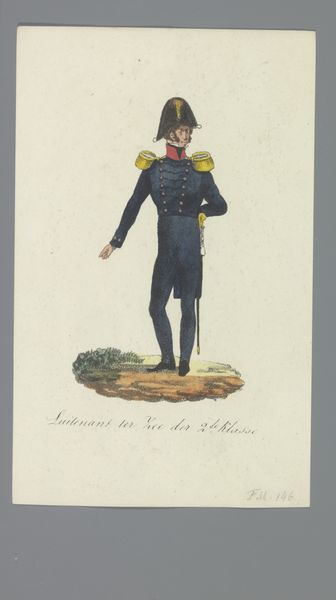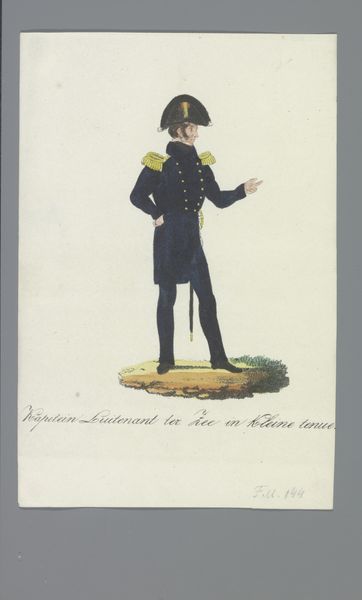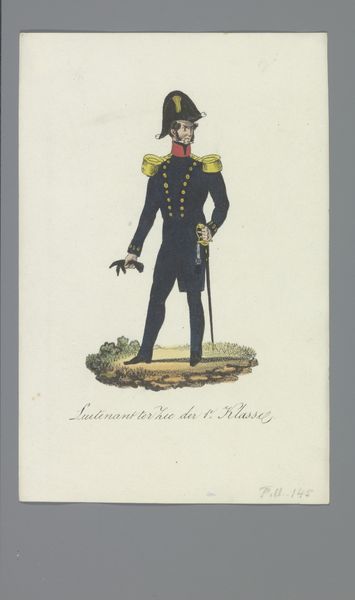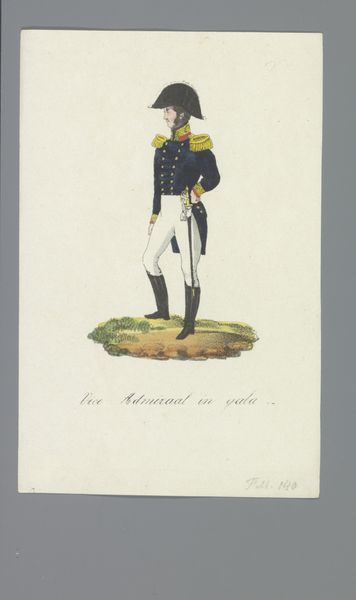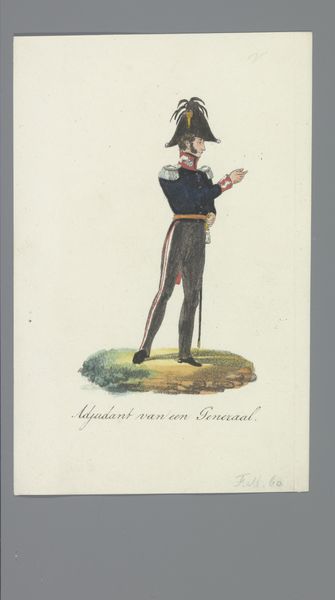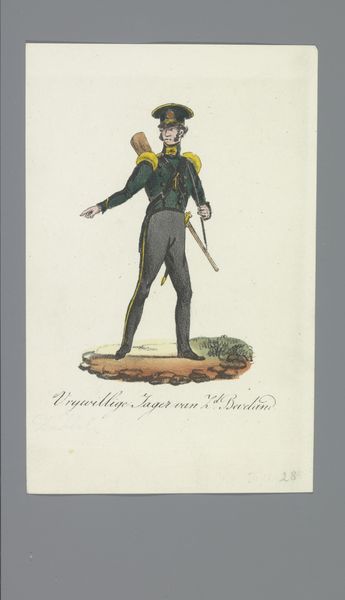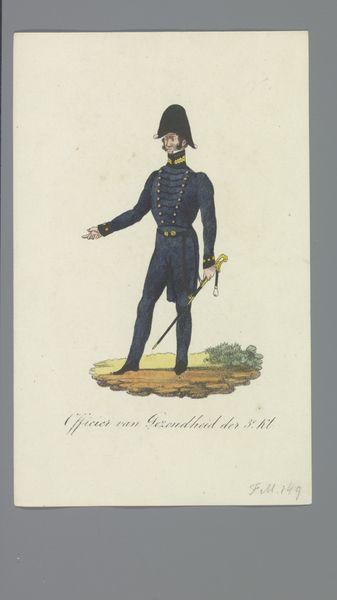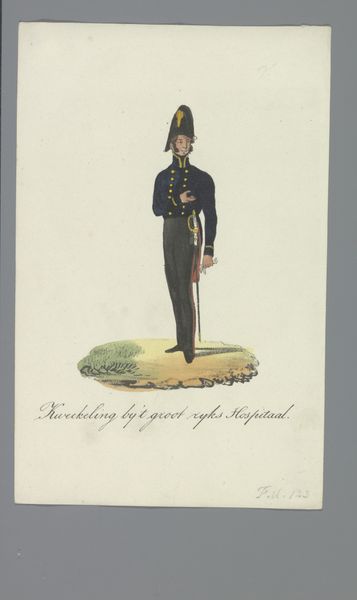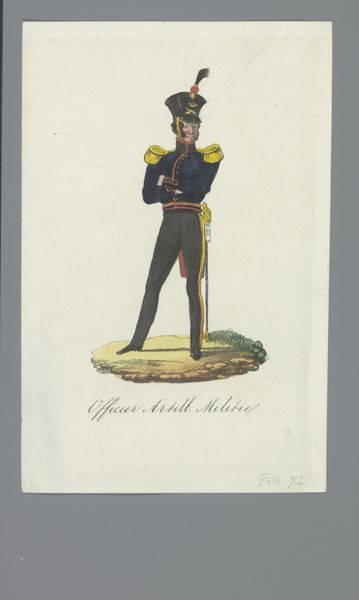
watercolor
#
portrait
#
watercolor
#
romanticism
#
costume
#
watercolour illustration
#
genre-painting
#
history-painting
Dimensions: height 170 mm, width 110 mm
Copyright: Rijks Museum: Open Domain
Editor: So, here we have Albertus Verhoesen's watercolor, "Schout bij Nagt in groote tenue," created sometime between 1835 and 1850. It's a rather formal portrait of a naval officer. The details of the uniform are quite striking, and almost theatrical. What catches your eye? Curator: I’m drawn to the social and economic implications embedded in the materials and production of this piece. Watercolors, especially in rendering detailed military dress, speak to notions of trade and industry: the pigments, the paper, the labor in producing such a detailed piece. Notice the artist’s precision; consider how that precision connects to broader social structures, specifically the importance of a naval officer within society. What do we know about the availability and cost of such materials at the time? Editor: I hadn't considered that aspect. I suppose the availability of quality watercolors signifies a certain level of economic development and trade networks. Does the portrayal of the uniform as "theatrical" you think speak to ideas of class performance? Curator: Exactly. The "theatricality" as you say isn't just about aesthetics. It speaks volumes about the social status and power conveyed through attire, meticulously rendered using increasingly available manufactured goods. Who had access to this level of representation, and how did the labor involved in creating it reinforce existing power structures? How did the officer afford the uniform? The image represents a network of commerce. Editor: So it's less about individual artistic expression and more about understanding the societal context and the material conditions that allowed for the artwork’s creation in the first place? Curator: Precisely. By examining the production process, from sourcing the pigments to the artistic labor, we gain a deeper understanding of the historical moment and the subject's position within it. Editor: I never really thought of it that way before, I learned a lot from this image. Curator: Likewise. It reinforces how a simple watercolor reveals such vast social realities.
Comments
No comments
Be the first to comment and join the conversation on the ultimate creative platform.
